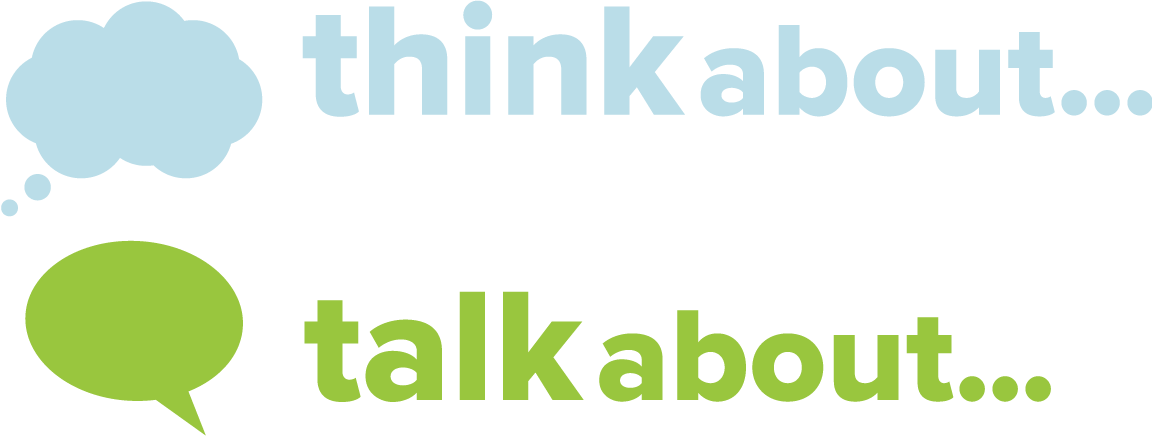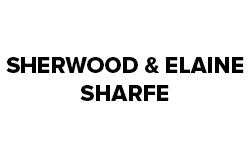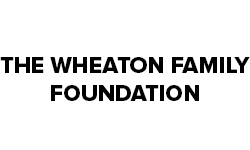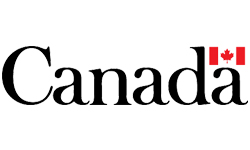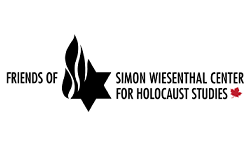Part B: Learning Plan
In this inquiry students will:
- Examine the relationship between power and authority as it relates to individuals and then extend that understanding to analyzing the distribution of power and privilege in Canada and countries bordering the Atlantic.
- Investigate National and global agencies that support human rights
- Understand the impact of the global community on Canada and understand that as Canadian citizens, living in a global community they are interdependent on one another; therefore student choices impact on their local community and the global community.
Teachers may want to consider putting the questions into a “Before, During, After” chart to note the changes in students’ thinking as a result of the inquiries.
QUESTIONS TO GUIDE INQUIRY
- Does democracy work?
- What is democracy?
- Is democracy ideal?
- How does the concept of privilege impact democracy? Is there a better alternative?
- What is the relationship between rights and responsibilities?
- What happens when citizens do not have equal rights and where does responsibility to act lie?
- How far-reaching are your responsibilities?
- How do my actions influence others? / How do the actions of others influence me?
- How big is your society?
- How far-reaching is your personal power and influence?
- What influences your decision-making?
- Does multiculturalism work in a democratic society?
- Is affirmation of multiculturalism a right or a responsibility?
- How do we honour the cultures of people who have contributed to Canada?
- How does ‘privilege’ impact multi-culturalism?
See Glossary in Part C
Vocabulary
- Authority
- Coerce – Coercion
- Colonization
- Diversity
- Force
- Influence
- Marginalization
- Neo-colonialism
- Oppression
- Pluralism
- Power
- Privilege
- Race – racism
- White privilege
Inquiry 1
What is the relationship between power and authority?
What influences the decisions, choices, and actions that you make?
PA 6.1
Examine the relationship between power and authority as it relates to individuals and others.
Develop understanding of concepts: power and authority and influence.
The following process is designed to check student understanding of the relationship between power and authority. The teacher is trying to draw out the criteria and characteristics for the concepts of power, authority and influence.
What influences your decisions, choices, actions that you make?
- Think of something you recently did that you wanted to do. Why did you want to do whatever it was? What was influencing your decision?
- Think of something that you didn’t want to do or feel like doing. Why didn’t you want to do whatever it was? Why did you do it? What was making you comply with something that you didn’t want to do? What was influencing your decision?
Chart student answers and then begin to categorize reasons for doing or not doing something.
Be sure to raise examples under all categories of power. (coercion, authority, influence)
CONNECT TO TOPIC AND SURFACE STUDENTS’ THINKING ABOUT …
- Pose the essential and guiding questions and allow students to discuss their thoughts on the matter. Teachers may choose to have students note their thinking in a “before, during, and after” format
- Determine what the students know, understand, need to be able to do to master/answer the essential questions (connect to content). Additional guiding questions can be added as required. Students are encouraged to add their questions to the others.
- Create Know, Want to know, Learned Chart – identify vocabulary that requires development.
- Why did you want to do whatever?
i.e. Possible reasons – Respected person, popular, knew how to, matched beliefs, satisfaction - Why didn’t you want to do whatever?
i.e. Possible reasons – Afraid not to, against beliefs, dangerous, didn’t know how - What kind of power was impacting your decision?
Sort into:- Force- coercion
- Authority
- Influence
Connect reasons to the various forms of power concepts.
- Identify other examples of forms of power within their experiences so that they are clear on their understanding of the concepts.
- Force/coercion: pushing someone, saying something hurtful; eg. gangs, bullying
- Authority: being elected class representative, being invited to act or speak on behalf of the
- group, inviting others to act or speak on behalf of the group; power given because of a position eg. leadership of an organization
- Influence(voice): speak out on their behalf or on the behalf of others); clergy, charisma
- Complete a Frayer Model organizer (four-quadrant grid) showing characteristics, non-characteristics, examples, and non-examples of each form of power noted above.
Developing Leadership Discussion – What are the characteristics of Leaders?
Using the examples generated and charted have students:
- Identify the group organization supporting the various forms of power in the examples cited – structured, non-structured.
- Identify the leaders of the groups and list some of the characteristics of those leaders.
- Categorize traits according to positive and negative.
- Identify what is needed for the leader to be effective.
- Connect to forms of power, look for patterns. Chart for future reference.
DEVELOPING UNDERSTANDING
- Community leaders for interviews
- Political leaders
Each group must find out the information in the question posed below. Encourage students to present information learned in a variety of modes including speaking, writing, drama, multimedia, or other modes so that all students have an entrance point for demonstrating their learning and understanding.
Divide students into groups and give them a local, provincial, territorial, national, or international context to research.
Choose 3 organizations that are structured and demonstrate some sort of power, authority, or influence. (i.e. Church groups, scouting, guiding groups, political organizations, Red Cross, SPCA, Right to Play, Salvation Army, Idle No More, Outward Bound Canada, Bold Eagle Program, First Nations Child and Family Caring Society of Canada, others)
In each organization identify the following:
- Name, Mandate or purpose of the organization
- Structure of the organization
- Leader/head – how chosen, skills, qualifications
- Representatives – new members, how chosen, qualifications
- Decision making process
- How funded
- How the individuals and organizations identified obtained their power
- How the individuals and organizations identified use influence, force, or authority
- show the relationship between the power and authority
- individuals within organization
- individuals outside of organization
- show the relationship between the power and authority
- What are the similarities and differences between the organizations?
- What are the characteristics of leaders and organizations?
- Add to chart of effective leadership characteristics
Present findings to class. Develop summary statements and chart for future reference.
APPLY AND EXTEND KNOWLEDGE
- Student (young people) groups and societies to which students belong. (formal and informal)
Identify:
- Name, Mandate or purpose of the organization
- Structure of the organization
- leader/head – how chosen, skills, qualifications
- representatives – new members, how chosen, qualifications
- decision making process
- how funded
- How the individuals and organizations identified obtained their power i.e. mandated, voted, voluntary
- How do the organizations get people to do things
- within organization (influence, force, or authority)
- outside of organization (influence, force, or authority)
- Which kind of power works best to get people to do things? Explain your thinking.
- What kinds of things should people in authority think about when asking people to do things?
CONNECT TO TOPIC AND SURFACE STUDENTS’ THINKING ABOUT …
Inquiry 2
What is privilege and how does it impact society? What is the relationship between power and privilege?
PA6.2
Analyze the distribution of power and privilege.
The Canadian constitution puts into law the rights and freedoms that Canadians believe are necessary in a free and democratic society. It recognizes:
- primary fundamental freedoms:(e.g. freedom of expression and of association),
- democratic rights (e.g. the right to vote),
- mobility rights (e.g. the right to live anywhere in Canada),
- legal rights (e.g. the right to life, liberty and security of the person),
- equality rights, and
- recognizes the multicultural heritage of Canadians.
More information can be found at: http://archive.is/MY99J
It also protects official language and minority language education rights. In addition, the provisions of section 25 guarantee the rights of Indigenous peoples of Canada.
Process
For all areas of study in grade 6, students will be comparing the Canadian experiences to countries bordering the Atlantic. Teachers are encouraged to identify specific countries and have students study those same countries repeatedly so that students can gain a stronger understanding of those countries. In this inquiry, students begin to understand that not all Canadians experience rights and freedoms in the same way and that there are diversity issues that impact the security of the person and the application of the principal of equality of rights.
Students will need to understand the concepts of unearned advantage, privilege, white-privilege, and neo-colonialism so they can go deeper into the exploration of power, global interdependence and multi-culturalism. Definitions of the words are found in the glossary in Part C. Teachers are encouraged to explore other definitions for use with their students.
Teachers might also want to share with students information on the United Nations Declaration on the Rights of Indigenous Peoples as they discuss neo-colonialism in other countries.
Canada is a country that celebrates and honours diversity. Canadians have established and declared rights and freedoms found in the Canadian Charter of Rights and Freedoms.
- Do all Canadians experience Canadian rights and freedoms the same way? Have students support their thinking with evidence from their own experiences. Compare student responses against the diversity wheel so that students can begin to see areas of discrimination or areas where different treatment can occur.
- What happens when citizens do not have equal rights and where does responsibility to act lie?
- What is the relationship between rights and responsibilities?
- If you see something that is wrong what is your responsibility to make it right?
- Does multiculturalism truly exist in Canada?
- Is multiculturalism a right or a responsibility?
- How do we honour the cultures of people who have contributed to Canada?
- What happens when rights are not equal?
- How does ‘privilege’ or unearned advantage impact multi-culturalism?
Discuss these essential, over-arching questions with students and chart their answers. These questions will be revisited at the end of the study to see if student thinking has changed.
Canada is a country that celebrates and honours diversity. In this next activity, students will consider differences that can exist in the way students experience similar situations.
For additional information see Peggy McIntosh’s research on privilege. Part C.
White Privilege statements helpful to this inquiry can be found at White Privilege and Male Privilege: A Personal Account of Coming to See Correspondences through Work in Women’s Studies” (1988), by Peggy McIntosh; Wellesley College, Center for Research on Women, Wellesley MA 02181
Retrieved from: https://web.archive.org/web/20150930025427/http://www.amptoons.com/blog/files/mcintosh.html
Do all Canadians experience Canadian rights and freedoms the same way? Have students support their thinking with evidence from their own experiences.
Some helpful definitions to explore (See part C for more support)
Diversity: difference, variety
Most often used when referring to race, class, or gender
Prejudice: an opinion that is formed before any knowledge of the individual or situation
Privilege
- an invisible package of unearned assets
- special rights, advantages given to a person or group of people
- special exemptions granted to someone
Privilege operates on personal, interpersonal, cultural, and institutional levels and gives advantages, favours, and benefits to members of dominant groups at the expense of members of target groups.
White Privilege
A system of unearned freedoms, rights, benefits, advantages and access assumed by members of the dominant group in a society. This is usually taken for granted by individual receiving the advantage as they are conditioned not to see it.
For more background information refer to: McIntosh, Peggy. White privilege: Unpacking the invisible knapsack. Retrieved April 30, 2005 from: http://www.antiracistalliance.com/Unpacking.html#top
Basic Rights Categories
- Education
- Health care
- Food
- Movement
- Free Speech
Opening the door to think about White Privilege
The following discussion explores students’ understandings of the various sections of the diversity wheel on page 19. Have students take some time to look at the Diversity Wheel. In what areas of diversity do they have some personal experience?
Canadians are always talking about celebrating diversity.
- What does the statement ‘celebrate diversity’ mean to students?
- Do Canadians actually celebrate diversity?
- Are all Canadians treated the same?
As students explore the answers to the questions below chart their responses on the diversity wheel. Are there certain areas that are
- Have people made assumptions about students due to their age? Have students share their stories. Teachers may also have personal stories to share.
- Can students think of other areas where people might be judged or have opinions formed before knowing all the information, pre-judged them?
- Who in society might have either an unearned advantage (privilege) or disadvantage over others? Chart students’ answers against the various areas of the diversity chart.
Have students think about who might be able to do these things and who might not be able to do these things.
Some categories to consider might be:
- Clothing – Can students purchase clothing that reflects their fashion or cultural interests?
- Shopping – Are students treated with respect in stores?
- Entertainment – Can students purchase books, magazines, or watch television and see people like themselves represented there?
- Food – Can students buy foods that are common in their culture?
- Housing – Can students live anywhere in their community? Is the housing comparable in different areas that are available to students?
- Clean drinking water – Can students drink the water from their household tap?
- Racial profiling by police – Have students ever been stopped or questioned by police because of the way they look?
- Getting additional training after high school – Will students be able to get additional schooling or training to prepare them for a future job if they want to?
- What other examples of different treatment or experiences can students provide?
Have students search for news articles that highlight inequities in treatment in various sections of the diversity wheel. For each story identify:
- Is there an unearned advantage (privilege) or disadvantage described in the article?
- What area of the diversity wheel is being referenced? Is there more than one area?
- Can students think of any examples where they may have an unearned advantage?
- Compare against the diversity wheel. Are any patterns becoming evident?
- What themes are emerging?
- What are the similarities and differences?
- Why do students think this is so?
The independence level of the class, will determine how much teacher direction is required to do this.
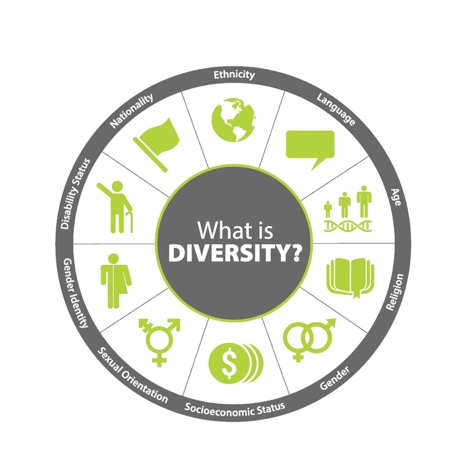
Source: Marketing and Communications, University of Saskatchewan
Permissions for use and translation from U. of S. Dept. of Ed.:
- Where do most of the student answers lie within the wheel?
Have students reflect on the original question again:
- Do all Canadians experience Canadian rights and freedoms the same way?
- When looking at the diversity wheel, who has certain power and who has certain privilege? Give evidence to support their thinking.
- Why do students think this is so?
- What action can students take to change this? What organizations exist in Canada that were established by young people? Consider WE Day, Shannen’s Dream and others.
DEVELOPING UNDERSTANDING
Analyze the distribution of power and privilege
Divide students into groups and assign them a specific country to research and present their findings. Students are studying Canada and countries bordering the Atlantic Ocean. Since students are learning about power and privilege, teachers are encouraged to choose countries that show similarities and disparities in wealth, power and privilege.
i.e. – England, France, Greenland, Iceland, Mexico, Cuba, Brazil, Morocco, Nigeria, South Africa, Cameroon, Ivory Coast.
Have students gather and interpret data from various print and electronic sources, using graphs, maps, and charts.
Examine:
Regions in Canada (mountainous areas: tourism, forestry, mining and coastal areas: fishing and shipping) and selected countries bordering the Atlantic Ocean
For each country have students identify:
- The geographic landscape.
- The economic state of the country (how it makes money).
- The governance model. Who makes the rules/laws? How does the government get its power?
- The lifestyle of the people of the country.
- Education – Who gets to go to school? What are the costs?
- Health care – How easy it is to get health care? What are the costs?
- Jobs – What kinds of jobs are available? How well do they pay?
- Who has power and privilege?
- Who does not have power and privilege?
- Compare answers against the diversity wheel graphic. Do students see any similarities to Canada’s experience?
- How are the economies and lifestyles of the countries the same?
- How are the economies and lifestyles different?
What are the reasons for economic differences between countries?
- How are those without power treated by those with power?
- How do people feel about those who are different? Do not have power?
- How great/significant/strong is the concept of white privilege among the countries?
- Would you like to live in this country? Explain your thinking.
- What themes are emerging?
- What are the similarities and differences?
- Why do students think this is so?
The independence level of the class will determine how much teacher direction is required to do this.
APPLY AND EXTEND KNOWLEDGE
- Newcomers to the community
- Member of Open Door Society
Citizenship and Immigration Canada (CIC) is the government agency that supports immigration to Canada.
- What is the mandate and history of the CIC?
- How many people are choosing to immigrate to Canada?
- From what countries are people immigrating to Canada?
- What impacts Canadian immigration policies?
- Why do people choose, to immigrate to Canada?
- What is the impact of immigration on the worldviews of people – especially youth, indigenous and non-indigenous youth?
- In this school
- In this community
- Province
- Country
CONNECT TO TOPIC AND SURFACE STUDENTS’ THINKING ABOUT …
Inquiry 3
How am I connected to the global community?
How far reaching are your responsibilities as a global citizen?
What is my responsibility to protect human rights in a country that supplies goods to support my lifestyle?
IN6.3
Understand that student’s daily lives are connected to countries across the globe/world and consider your responsibilities as Canadian in a global relationship.
- Find out what the term – ‘Global Interdependence’ means to the students – define
- Students will begin to think about how they are impacted and connected to other parts of the world.
Students will understand that many items they use on a daily basis come from outside of Canada. Have students canvas their lunches, clothing tags for food and clothing origins. Identify and map the country of origin of their inventoried items. Chart the location of countries providing the items and calculate the percentage or amount of use by students in the classroom. This gives an indication of the use of global goods by students on a daily basis.
Have students develop a summary statement of their use of items from outside of Canada to meet their needs. What would be their global interdependence rating? 1 – low (little use) – 10 – high (used daily)?
- Make a general statement about how their daily life is influenced by other countries in the world.
- What do students know about the countries that supply their goods?
- What kind of governance is used in the countries identified?
- Given their beginning understanding of privilege and power, what do students think the lives of someone their age might be like in that country?
- What do students think human rights are like for workers who are producing the food or clothing in the identified countries?
Canada and Human Rights
“Canadians expect their government to be a leader in the field of human rights by reflecting and promoting Canadian values.
Canadians recognise that their interests are best served by a stable, rules-based international system. Countries which respect the rule of law tend to respect the rights of their citizens, are more likely to benefit from development, and are much less likely to experience crises requiring peacekeeping, emergency assistance or refugee resettlement missions.
The UN Charter and customary international law impose on all countries the responsibility to promote and protect human rights. This is not merely a question of values, but a mutual obligation of all members of the international community, as well as an obligation of a state towards its citizens.”
This text was retrieved from https://web.archive.org/web/20140807105633/http://www.international.gc.ca/rights-droits/policy-politique.aspx – July 2014, using the Internet Archive WayBack Machine. Reproduction of this text has not been produced in affiliation with, or with the endorsement of, the Government of Canada.
- What does the paragraph above say to students?
- What do Canadians value? How do you know? What evidence do students have?
- What is the student responsibility as a global citizen and a Canadian citizen to protect human rights in countries that supply student’s basic needs and trade with Canada?
Chart student answers for later reflection.
DEVELOPING UNDERSTANDING
Research Canadian agencies and the following key international agencies:
- United Nations
- UNICEF
- UNESCO
- Amnesty International
- Médecins sans frontières
- United Nations High Commission for Refugees
- International indigenous organizations (see resources for suggestions)
- Faith-based international development organizations (see resources for suggestions)
Identify:
- The mission and goals of the organization.
- When and why it was created.
- Where this organization is located/based.
- Who the organization serves.
- Who belongs to this organization? How do you become a member? Why would you become a member?
- Accomplishments.
- How do they get funding?
- What kind of power do they employ to meet their mandate? Give evidence to support your thoughts.
Have students develop a group statement as to why these organizations exist.
APPLY AND EXTEND KNOWLEDGE
1. Indigenous Peoples – Reiterate and reinforce that First Nations people were here already and did not have to “come to Canada” as a result of persecution, employment, etc. There were no “push-pull factors” operating on Indigenous people. They were already living and thriving in Canada. (Investigate the contribution of an Indigenous person toward enhancing human welfare in Canada).
2. Born in Canada – Canadian (Investigate and represent the contribution of a Canadian individual or organization toward enhancing human welfare in Canada).
3. Not born in Canada – Immigrant? Not living in Canada (Investigate and represent the contribution of an individual not born in Canada toward enhancing human welfare in Canada (e.g., neighbours, community members).
- Why would people choose to spend their time trying to enhance human welfare?
- What would be the leadership traits, qualities that the person might have?
- You have just inherited a million dollars and must donate it to an organization that supports human welfare. You may choose to divide it among organizations or give to only one. How would you spend the money and why?
EVIDENCE OF LEARNING
Assessment pieces vary but should allow students to demonstrate their understanding in a variety of ways and may include group presentations.
- Through an artistic medium (posters, power point, mural) describe the basic rights of a Canadian citizen and the responsibilities connected to those rights.
- Have students prepare a commercial or video clip, spoken word poetry expressing why they believe that with the enjoyment of rights come certain responsibilities. Justify how your rights affect your responsibilities
- Canada is a country that celebrates and honours diversity. Canada is to promote and reflect Canadian values on a global level. What are Canadian values? How do you know? What evidence do students have?
- The Canadian government signed treaties and made commitments to First Nations, Métis, and Inuit peoples. How well has Canada fulfilled its commitments to Indigenous Peoples to honour treaty responsibilities and protect Indigenous human and citizenship rights? What is the student responsibility to protect human and citizenship rights in Canada?
- As a citizen in a country that supports and celebrates diversity and multi-culturalism, what is your responsibility to redress unearned advantage, white privilege, locally, nationally, and/or globally?
- What is the student responsibility as a global citizen and a Canadian citizen to protect human rights in countries that supply student’s basic needs and trade with Canada?
STUDENT CITIZENSHIP JOURNAL OPPORTUNITIES
- You are thinking of joining an organization that supports the protection of human welfare. What qualities could you bring to the organization and why should they consider having you as a member?
- What kind of a leader are you? What are your strengths? How do you know? How would you improve your leadership skills?
- Is leadership over-rated? Can our society exist without effective leadership? Explain your thinking.
- Does Canada “walk the talk” when it comes to protection of human rights globally? Explain your thinking.
- Does Canada “walk the talk” when it comes to protection of human rights within Canada? Explain your thinking.
© 2024 Concentus Citizenship Education Foundation Inc. All Rights Reserved.

